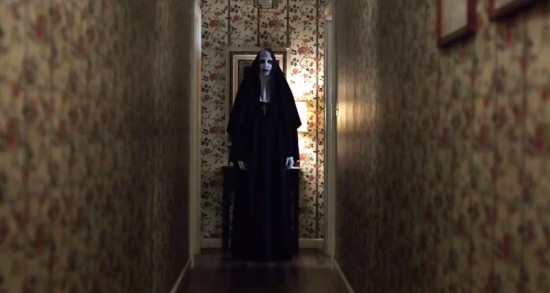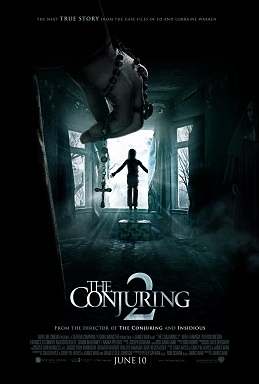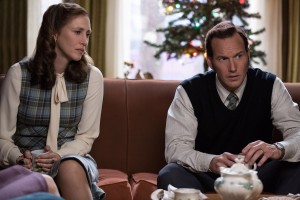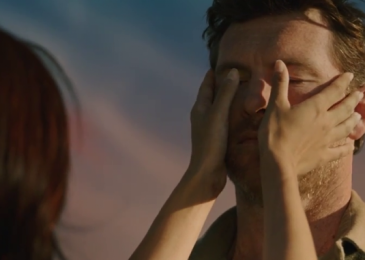James Wan’s “Conjuring” movies are something rare in the horror genre: warm-hearted stories that scare the hell out of you.
The first film, released in 2013, notably received an R rating for being “too scary” — movie marketing that was actually justified. The film was one of the most terrifying, knuckle-clenching haunted house movies in decades, elevated by Wan’s affection for his characters. Ed and Lorraine Warren (played by Patrick Wilson and Vera Farmiga) were real-life paranormal experts carrying out investigations on behalf of the church, and Wan treated them not as oddballs but as likable people driven by faith and a desire to help. That human element kept the film moving when the scares weren’t coming and elevated the stakes when Wan unleashed the ghosts.
Wan took a break from horror movies after “The Conjuring” to deal with cuddlier beasts in “Furious 7.” Now, before traveling under the sea for “Aquaman,” he’s back with “The Conjuring 2,” which follows the Warrens as they investigate England’s famous Enfield haunting of the late 1970s. It seems a single mother (Frances O’ Connor) and her children have observed deafening crashes, demonic voices and self-moving furniture; even the cops believe the church is their only help. The Warrens, having achieved fame for their work in the Amityville haunting — glimpsed in the prologue — are asked to check into it. Lorraine, rattled by visions she saw in the Amityville house, is initially hesitant, but Ed reminds her of their commitment to help those in need (and, of course, a contractual sequel obligation). They promise to just go observe, but come on — you know how this works.
Horror movies, like comedies, are dependent on surprise. Audiences must be caught off guard in order to laugh or scream. Once you figure out the formula, you’re too busy watching the mechanics for the jokes or frights to pay off. The curious thing about “The Conjuring” and its sequel, however, is how much they lean on tricks that should have been long played out. Wan isn’t concerned about creating nightmarish new images or revolutionizing terror. A master craftsman, he takes what’s worked well and does it again to near perfection. There are loud bumps in the night, creepy voices and — Wan’s specialty — ghoulish faces that materialize when we least expect them. There are a few new ideas — a particularly effective one involves an animated figure coming to horrifying life. But for the most part, he sticks to the classics: jump scares, possessed kids and dark corners that hide terrifying secrets. In the wrong hands, it would be quaint or even silly. But Wan has an almost supernatural ability to read his audience and control their attention. He has a masterful use of pace to tighten the screws or ramp up the terror, and orchestrates every sound, shadow and edit to deliver effective scares. If you jumped and screamed during “The Conjuring,” you’ll likely let out a yelp or four here.
To review more would risk regurgitating my “Conjuring” review; if you liked that movie, this one is probably up your alley. It might be a bit too long and there might be a few too many CGI-enhanced scares, but “The Conjuring 2” is an effective scream machine. There are ghouls, demons and ghosts (including a terrifying one that looks like Marilyn Manson in a nun’s habit) haunting the screen, and the skilled actors give the terror an emotional grounding. There’s also the added wrinkle that many people — including the Warrens at one point — think the entire case could be a hoax. While there’s nothing as exquisitely suspenseful as the “clap game” from the first film, audiences should find plenty to keep them on the edge of their seats, including a climax that drips with tension and delivers a jolt that nearly knocked me on the floor.
But what stands out for me with “The Conjuring 2,” even more so than its predecessor, is its depiction of Christian decency and love, which you don’t see effectively portrayed in most ghost stories.
The Warrens’ faith — specifically, their Christian faith — is presented as the driving force in their work. Ed studied to become a demonologist after a childhood encounter, but his greatest strength comes from a crucifix that he keeps around his neck; Lorraine developed psychic visions after witnessing an angel as a child. Christian beliefs aren’t uncommon in horror films, particularly ones that deal with demons and possession. Latin phrases and crucifixes are staples of the genre. But here, they’re not just symbols. They’re tools that the Warrens use because they believe that the power of God is stronger than the power of demons and that evil can be defeated — a rare theme for a genre so concerned with ending on a “gotcha” moment. And listen, I don’t know how much of their story I believe, particularly as someone with an admitted suspicion of the supernatural. Truthfully, I don’t know how much good crucifixes and Latin phrases do, and I suspect prayer and Scripture would be a more effective — if un-cinematic — approach. But I can’t deny that Wan depicts his heroes’ faith with respect and positivity, and the scares are balanced with hope and optimism.
The film suggests that Christian love might be the most effective tool in defeating evil. Part of that is seen in the film’s depiction of the Warrens’ marriage. Their hesitancy about taking on new cases is rooted in concern over what’s best for their family and when Lorraine has visions of what appears to be Ed’s death, she grows reluctant to meddle with the supernatural any further. As they meet people who ridicule them and accuse them of fraud, they find strength in knowing at least they both have one person who believes them. Wilson and Farmiga bring a sense of homespun decency and charm to the role, and they portray a couple that really feels like they’re still in love, even after years of terrifying adventures together.
That decency extends to the people afflicted by the hauntings. Even as they want to protect their family, the couple agrees to help others because they want to set them free from supernatural turmoil. But they don’t just help through doing some ghost busting. The compassion the Warrens show is moving. Upon learning the father left, Ed decides to treat the troubled young family to a traditional Christmas, buying gifts for the kids and setting up the tree. Lorraine spends time with the youngest girl in the family, the center of all the supernatural activity, and helps her feel accepted. The duo encourages the family to band together and fight for each other, treating the presence like they would a bully. The film stops for a sequence where Ed picks up a guitar and plays an Elvis song for the family. There are no scares, no suspense in these moments; just a respite from the horror. It could be mawkish, but Wan films it with warmth and Wilson gives an aw-shucks goodness to the moment. The film suggests that love, sacrifice and community — very Christian values — are just as crucial to defeating evil as any incantation or talisman.
I don’t expect that churches will start booking theaters for “Conjuring 2” screenings. This is still a very scary movie that earns its R-rating (again, there’s very little blood, no foul language and no sex, but the scares are intense). But horror is a genre that is often ignored or condemned by Christians. If we’re people who believe in the supernatural and a battle against good and evil, then what genre could be more suited to depictions of that? And how many movies positively depict Christianity as a force that defeats evil; not through magic words or rites, but through bonding together and showing love and compassion? It’s a refreshing thing to see.
Even if I was watching through my fingers.








